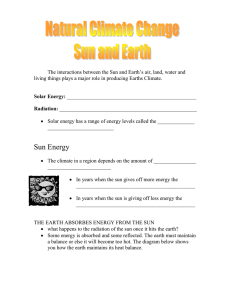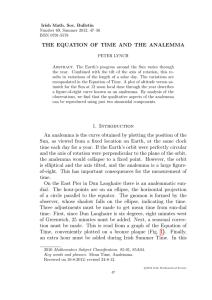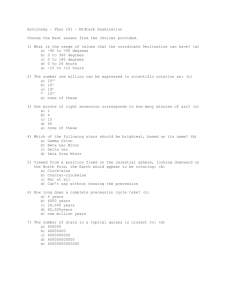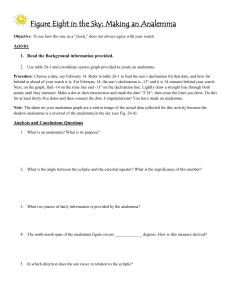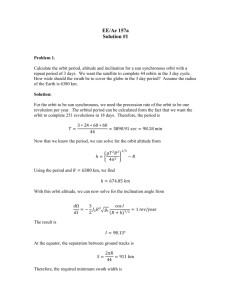Supplementary Discussion 1: The sun`s motion and its
advertisement
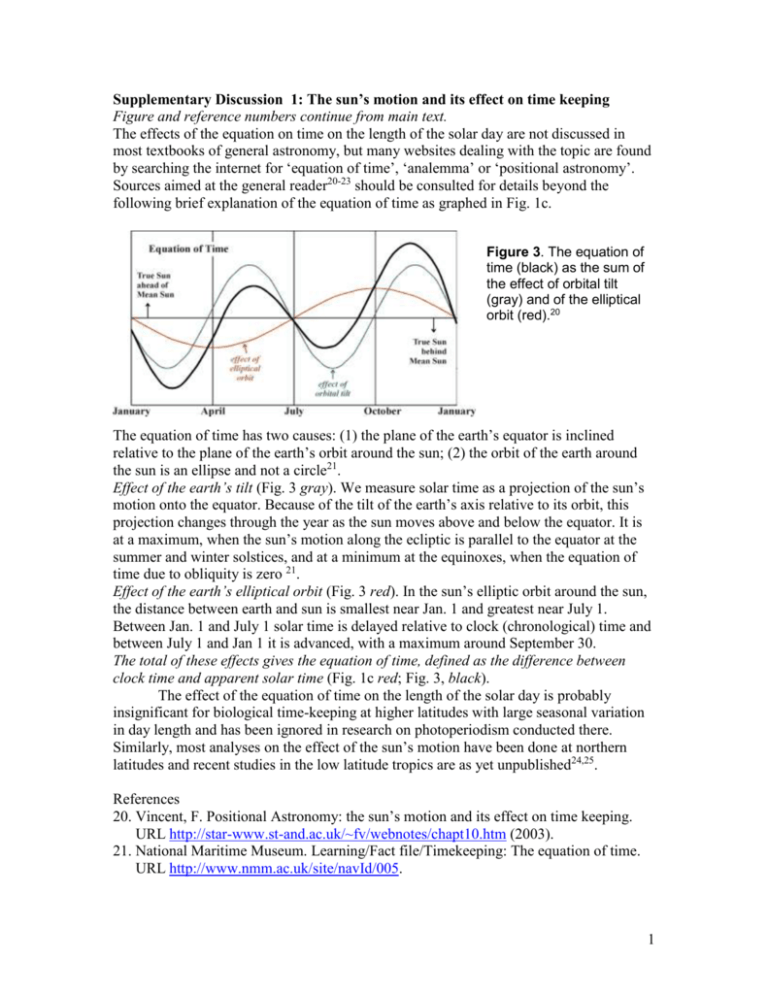
Supplementary Discussion 1: The sun’s motion and its effect on time keeping Figure and reference numbers continue from main text. The effects of the equation on time on the length of the solar day are not discussed in most textbooks of general astronomy, but many websites dealing with the topic are found by searching the internet for ‘equation of time’, ‘analemma’ or ‘positional astronomy’. Sources aimed at the general reader20-23 should be consulted for details beyond the following brief explanation of the equation of time as graphed in Fig. 1c. Figure 3. The equation of time (black) as the sum of the effect of orbital tilt (gray) and of the elliptical orbit (red).20 The equation of time has two causes: (1) the plane of the earth’s equator is inclined relative to the plane of the earth’s orbit around the sun; (2) the orbit of the earth around the sun is an ellipse and not a circle21. Effect of the earth’s tilt (Fig. 3 gray). We measure solar time as a projection of the sun’s motion onto the equator. Because of the tilt of the earth’s axis relative to its orbit, this projection changes through the year as the sun moves above and below the equator. It is at a maximum, when the sun’s motion along the ecliptic is parallel to the equator at the summer and winter solstices, and at a minimum at the equinoxes, when the equation of time due to obliquity is zero 21. Effect of the earth’s elliptical orbit (Fig. 3 red). In the sun’s elliptic orbit around the sun, the distance between earth and sun is smallest near Jan. 1 and greatest near July 1. Between Jan. 1 and July 1 solar time is delayed relative to clock (chronological) time and between July 1 and Jan 1 it is advanced, with a maximum around September 30. The total of these effects gives the equation of time, defined as the difference between clock time and apparent solar time (Fig. 1c red; Fig. 3, black). The effect of the equation of time on the length of the solar day is probably insignificant for biological time-keeping at higher latitudes with large seasonal variation in day length and has been ignored in research on photoperiodism conducted there. Similarly, most analyses on the effect of the sun’s motion have been done at northern latitudes and recent studies in the low latitude tropics are as yet unpublished24,25. References 20. Vincent, F. Positional Astronomy: the sun’s motion and its effect on time keeping. URL http://star-www.st-and.ac.uk/~fv/webnotes/chapt10.htm (2003). 21. National Maritime Museum. Learning/Fact file/Timekeeping: The equation of time. URL http://www.nmm.ac.uk/site/navId/005. 1 22. Müller, M. Equation of time – problem in astronomy. Acta Phys. Pol. A 88 Supplement, S-49 (1995) URL http://info.ifpan.edu.pl/firststep/aw-works /fsII/mul/mueller.html 23. Oliver, B.M. The shape of the analemma. Sky and Telescope. July 1972, 20-22. 24. Aslaksen, H. Which day does the sun rise earliest in Singapore? URL http://www.math.nus.edu.sg/aslaksen/calendar/sunrise.html (2003). 25. Aslaksen, H. & Teo, S.Y. The analemma from a tropical point of view. URL http://www.math.nus.edu.sg/aslaksen/teaching/analemma.pdf (2004). 2
